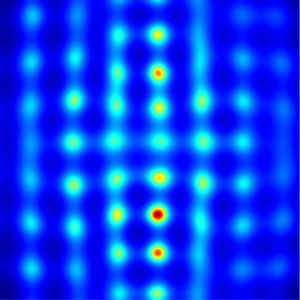Published online by Cambridge University Press: 23 April 2021

We use a generalized version of the equation of motion for a thin film of liquid on a solid, horizontal substrate as a model system to study the formation of singularities in space dimensions greater than one. Varying both the exponent controlling long-ranged forces, as well as the exponent of the nonlinear mobility, we predict the structure of the singularity as the film thickness goes to zero. The spatial structure of rupture may be either ‘pointlike’ (approaching axisymmetry) or ‘quasi-one-dimensional’, in which case a one-dimensional singularity is unfolded into two or higher space dimensions. The scaling of the profile with time may be either strictly self-similar (the ‘regular’ case) or discretely self-similar and perhaps chaotic (the ‘irregular’ case). We calculate the phase boundaries between these regimes, and confirm our results by detailed comparisons with time-dependent simulations of the nonlinear thin film equation in two space dimensions.